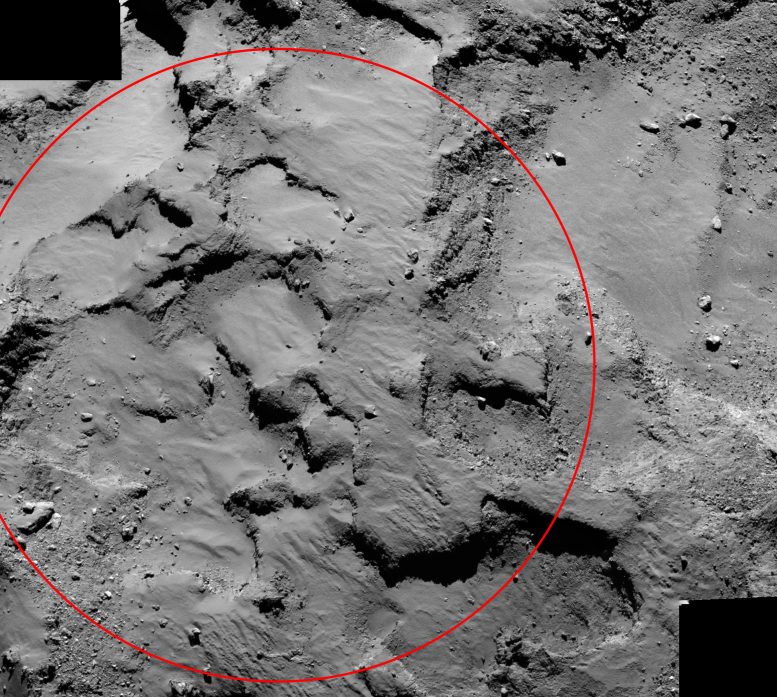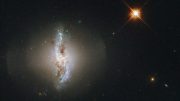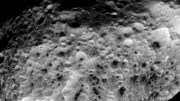
An annotated mosaic from the Rosetta spacecraft shows “Site J,” the primary landing site on comet 67P/Churyumov–Gerasimenko for the mission’s Philae lander. Credit: ESA/Rosetta/MPS/UPD/LAM/IAA/SSO/INTA/UPM/DASP/IDA
This mosaic from the European Space Agency’s Rosetta spacecraft shows a close up view of landing “Site J” – the primary landing site on comet 67P/Churyumov–Gerasimenko for the mission’s Philae lander.
The mosaic comprises two images taken by Rosetta’s OSIRIS narrow-angle camera on September 14, 2014, from a distance of about 19 miles (30 kilometers). The image scale is 1.6 feet (0.5 meters) per pixel. The red ellipse is centered on the landing site and is approximately 1,600 feet (500 meters) in diameter.
Site J is located on the smaller of the comet’s two lobes. On November 12, the Rosetta spacecraft will release Philae at 4:03 a.m. EST (10:03 a.m. Central European Time) (the time the signal is received on Earth). Touchdown of Philae on Site J is expected about seven hours later, at around 11 a.m. EST/5 p.m. CET (Earth Received Time).
Launched in March 2004, Rosetta was reactivated in January 2014 after a record 957 days in hibernation. Composed of an orbiter and lander, Rosetta’s objectives since arriving at comet 67P/Churyumov-Gerasimenko earlier this month have been to study the celestial object up close in unprecedented detail, prepare for landing a probe on the comet’s nucleus in November, and following the landing, track the comet’s changes as it sweeps past the sun.
Comets are time capsules containing primitive material left over from the epoch when the sun and its planets formed. Rosetta’s lander will obtain the first images taken from a comet’s surface and will provide a comprehensive analysis of the comet’s possible primordial composition by drilling into the surface. Rosetta also will be the first spacecraft to witness at close proximity how a comet changes as it is subjected to the increasing intensity of the sun’s radiation. Observations will help scientists learn more about the origin and evolution of our solar system and the role comets may have played in seeding Earth with water, and perhaps even life.
Rosetta is a European Space Agency mission with contributions from its member states and NASA. Rosetta’s Philae lander is provided by a consortium led by the German Aerospace Center, Cologne; Max Planck Institute for Solar System Research, Gottingen; National Center of Space Studies of France (CNES), Paris; and the Italian Space Agency, Rome. NASA’s Jet Propulsion Laboratory in Pasadena, California, a division of the California Institute of Technology, manages the U.S. participation in the Rosetta mission for NASA’s Science Mission Directorate in Washington.









Be the first to comment on "A Close Up View of the Primary Landing Site on Comet 67P"